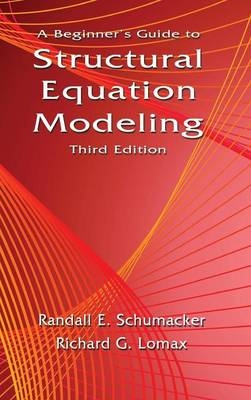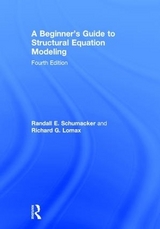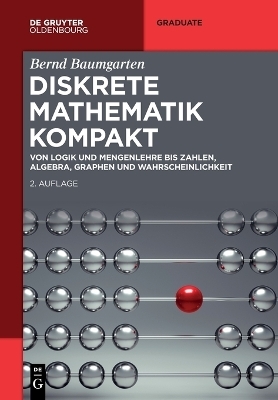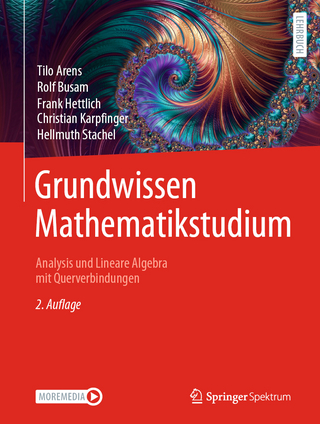
A Beginner's Guide to Structural Equation Modeling
Routledge Academic (Verlag)
978-1-84169-890-8 (ISBN)
- Titel erscheint in neuer Auflage
- Artikel merken
This best-seller introduces readers to structural equation modeling (SEM) so they can conduct their own analysis and critique related research. Noted for its accessible, applied approach, chapters cover basic concepts and practices and computer input/output from the free student version of Lisrel 8.8 in the examples. Each chapter features an outline, key concepts, a summary, numerous examples from a variety of disciplines, tables, and figures, including path diagrams, to assist with conceptual understanding.
The book first reviews the basics of SEM, data entry/editing, and correlation. Next the authors highlight the basic steps of SEM: model specification, identification, estimation, testing, and modification, followed by issues related to model fit and power and sample size. Chapters 6 through 10 follow the steps of modeling using regression, path, confirmatory factor, and structural equation models. Next readers find a chapter on reporting SEM research including a checklist to guide decision-making, followed by one on model validation. Chapters 13 through 16 provide examples of various SEM model applications. The book concludes with the matrix approach to SEM using examples from previous chapters.
Highlights of the new edition include:
A website with raw data sets for the book's examples and exercises so they can be used with any SEM program, all of the book's exercises, hotlinks to related websites, and answers to all of the exercises for Instructor’s only
New troubleshooting tips on how to address the most frequently encountered problems
Examples now reference the free student version of Lisrel 8.8
Expanded coverage of advanced models with more on multiple-group, multi-level, & mixture modeling (Chs. 13 & 15), second-order and dynamic factor models (Ch. 14), and Monte Carlo methods (Ch. 16)
Increased coverage of sample size and power (Ch. 5) and reporting research (Ch. 11)
New journal article references help readers better understand published research (Chs. 13 – 17) and 25 % new exercises with answers to half in the book for student review.
Designed for introductory graduate level courses in structural equation modeling or factor analysis taught in psychology, education, business, and the social and healthcare sciences, this practical book also appeals to researchers in these disciplines. An understanding of correlation is assumed. To access the website visit the book page or the Textbook Resource page at http://www.psypress.com/textbook-resources/ for more details.
Randall E. Schumacker is Professor of Educational Research at The University of Alabama where he teaches courses in structural equation modeling. He received his Ph.D. in Educational Psychology from Southern Illinois University. A Past-President of the Southwest Educational Research Association and Emeritus Editor of Structural Equation Modeling, Dr. Schumacker has also served on the editorial boards of numerous journals. His research interests include modeling interaction in SEM, robust statistics, measurement model issues related to estimation, and reliability. Richard G. Lomax is a Professor in the School of Educational Policy and Leadership at The Ohio State University where he teaches courses in structural equation modeling. He received his Ph.D. in Educational Research Methodology from the University of Pittsburgh. He has served on the editorial boards of numerous journals. His research focuses on models of literacy acquisition, multivariate statistics, and assessment.
1. Introduction. 2. Data Entry and Data Editing Issues. 3. Correlation. 4. SEM Basics. 5. Model Fit. 6. Regression Models. 7. Path Models. 8. Confirmatory Factor Models. 9. Developing Structural Equation Models: Part I. 10. Developing Structural Equation Models: Part II. 11. Reporting SEM Research: Guidelines and Recommendations. 12. Model Validation. 13. Multiple Sample, Multiple Group, and Structured Means Models. 14. Second Order, Dynamic, and Multi Trait Multi Method Models. 15. Multiple Indicator Multiple Indicator Cause, Mixture, and Multi-Level Models. 16. Interaction, Latent Growth, and Monte Carlo Methods. 17. Matrix Approach to Structural Equation Modeling.
| Erscheint lt. Verlag | 24.5.2010 |
|---|---|
| Verlagsort | London |
| Sprache | englisch |
| Maße | 152 x 229 mm |
| Gewicht | 846 g |
| Themenwelt | Mathematik / Informatik ► Mathematik |
| ISBN-10 | 1-84169-890-3 / 1841698903 |
| ISBN-13 | 978-1-84169-890-8 / 9781841698908 |
| Zustand | Neuware |
| Informationen gemäß Produktsicherheitsverordnung (GPSR) | |
| Haben Sie eine Frage zum Produkt? |
aus dem Bereich



